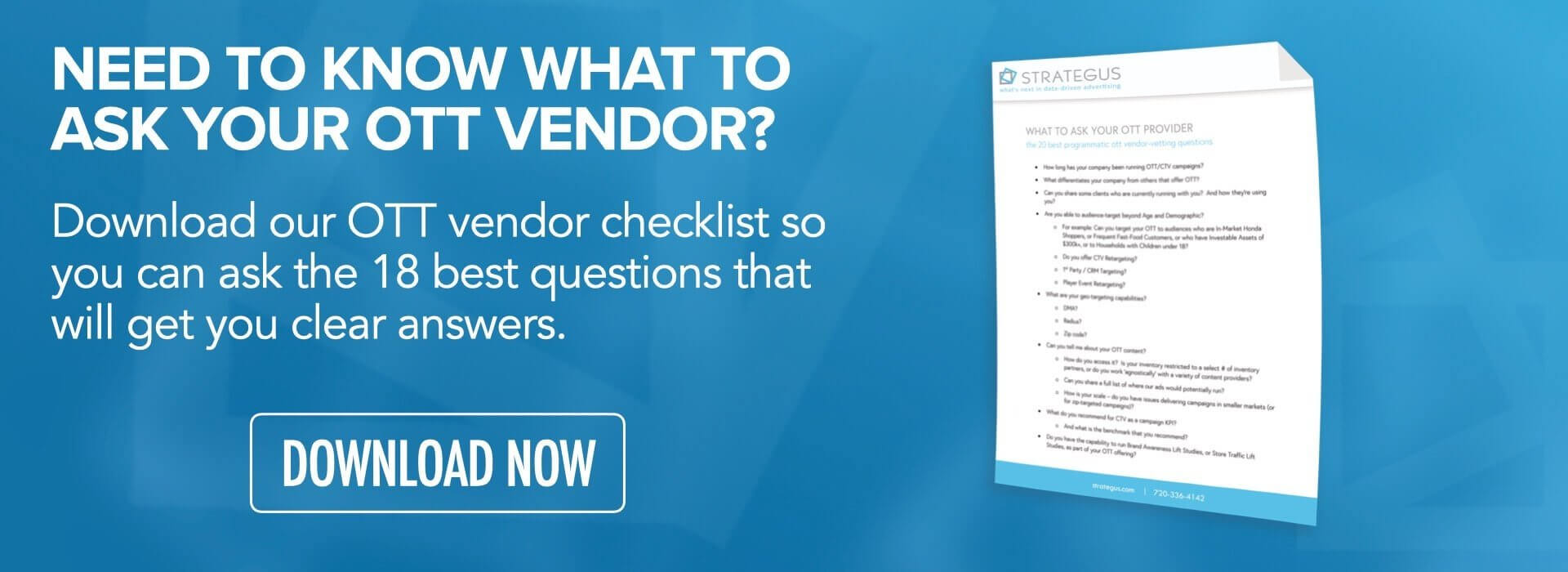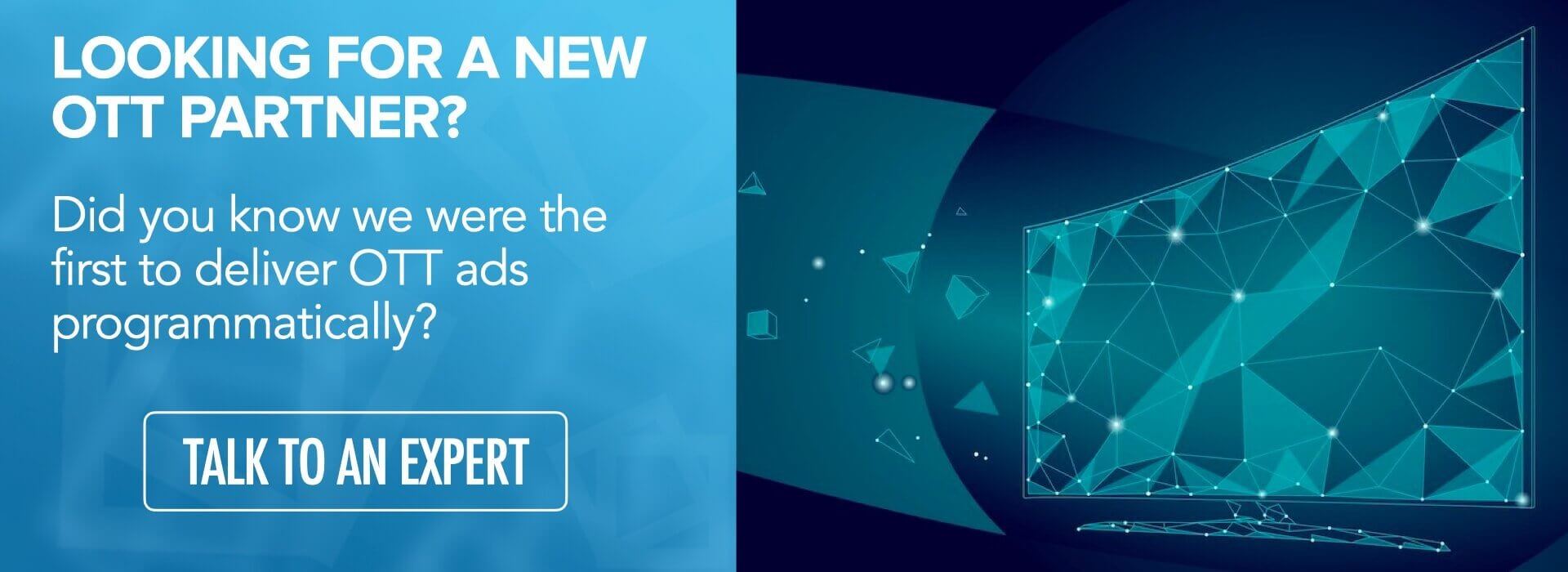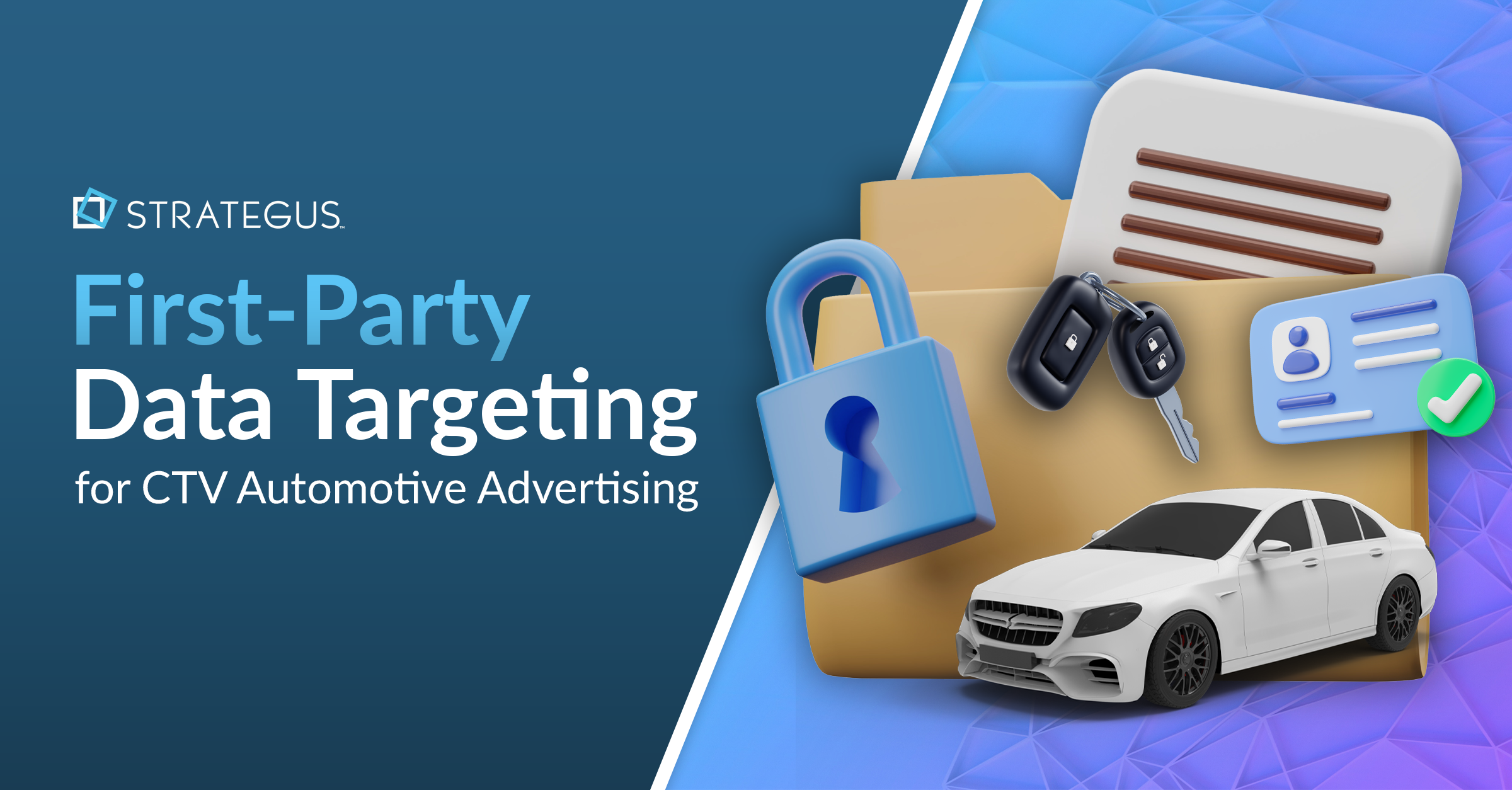- Home
- Strategus Blog
- First-Party vs Second-Party Data Targeting Strategy: 2025 Guide
First-Party vs Second-Party Data Targeting Strategy: 2025 Guide
 Andy Dixon
Andy Dixon
6 minutes read

This is a part of “The OTT Advertiser’s Guide to Second and First-Party Data,” click here to learn more
If you’re looking to maximize your targeting strategies, you need to know your audience and strengthen your relationship with them. This means consulting data-driven marketing practices that utilize first and second-party data collection.
According to Think With Google, 92% of leading marketers believe using first-party data to continuously build an understanding of what people want is critical to growth. Likewise, studies have also shown that 88% of marketers sought out second and third-party data as a means of learning more about their target audience.
It’s clear that multiple targeting strategies are important, but how does that relate to overall marketing campaigns that you run? There are several significant similarities and differences when considering second vs. first-party data targeting strategies, so let’s discuss how they relate to marketing strategies.

SECOND VS. FIRST-PARTY DATA TARGETING STRATEGY
According to Google/Econsultancy research, 89% of successful businesses say anticipating customer needs and providing assistive experiences along the customer journey are critical to growth.
To anticipate those needs and provide assistive experience, you’ll need to know as much as possible about your target audiences. This is where second and first-party data targeting comes into play.
First-party data targeting and its benefits
In the most basic sense, first-party data is the data you collect in-house or ‘first-hand.’ In most cases, this can include (but certainly isn’t limited to) Google Analytics, CRM systems, SMS, surveys, interviews, mobile apps, customer interactions, your social media, and more. That information is then used to target the right people with the right message.
Some benefits of first-party data targeting include:
- Accuracy — There’s a guarantee that the data you’re receiving is accurate to your market audience and relevant to your goals because you know the source of the data and how it was collected.
- Ownership/Exclusivity — Simply put, it’s yours and yours alone. That data can’t be accessed without your consent and credit, so you can feel free to do with it what you please.
- More Cost-Effective — Not to say there aren’t ways in which you pay for collecting first-party data, but it does cut out the middleman costs of getting your data from another business.
Challenge: It can be time-consuming to comb through saturated data to find relevant information.
Second-party data targeting and its benefits
Second-party data is collected through another business. It contains much of the same information found in first-party but without access to how it was obtained and who the data was collected from.
Some benefits of second-party data targeting include:
- Efficiency — When done correctly, second-party data targeting can be just as effective as first-party and more efficient. In fact, it can have more supportive data than first-hand in some cases because you can gather it from multiple credible sources, reaching more people and establishing stronger patterns.
- Great alternative or validation — Not everyone has access to first-party data, and if they do, second-party can be a great way to validate any assumptions or patterns.
- Customizations and results — With access to data from other businesses, you open up the number of people in your target market that is taken into account when customizing your buyer personas. Moreover, your results are already finalized and ready to be used.
Challenge: It can get pricey to obtain the data you need, and you have to be very careful who you’re getting it from.
WHEN TO USE FIRST-PARTY DATA
A great time to use first-party data is when you’re running marketing campaigns targeted at current customers. First-party data is always collected by you/your company from your actual customers, giving you the best snapshot of your customers. This, in turn, cuts out data that can get confused with your customers but is really that of another business’.
By accessing your current consumers directly, you ensure accuracy, allowing your team to truly understand them, what they enjoy/dislike about their experience with your company, and how to adjust your strategy to appease them.
WHEN TO USE SECOND-PARTY DATA
On the other hand, second-party data is great for marketing campaigns that are targeted at prospective customers and/or customers of trusted partners. This is because second-party data is obtained via another source, so it is a great way to feed marketing campaigns with the goal of generating new clients. This can give you extra insight into how to appeal to those outside customers.
Most importantly, you get a snapshot of how non-customers are shopping and when they’re in the market for a new purchase, allowing you to craft campaigns that cross their path at a pivotal point in their purchasing cycle. In the best-case scenarios, it can put your product/service right in front of the right customers just as they’re preparing to take action and make a sale.
REGARDLESS OF DATA, ALWAYS OPT FOR OMNICHANNEL
Regardless of where you’re getting your data, you should always opt for omnichannel campaigns. Both data collection techniques have their benefits, but without campaigns that maximize that information’s potential, you risk wasting your targeting efforts and not reaching your target audience anyway.
Not to mention your customers want an omnichannel experience. Business2Community reports that as many as nine out of 10 consumers want an omnichannel experience with seamless service between channels and 60% of millennials expect consistent brand experiences, whether in-store, online, or by phone.
Both types of data can be leveraged in omnichannel campaigns. With the right guidance, they can be used to optimize your omnichannel strategy and start connecting you with your current and potential customers in a way that elicits loyalty, increased sales, and word-of-mouth referrals.
To read more about advertising reach, frequency, and impact click here
CREATE THE PERFECT CAMPAIGN
It can be difficult to reach your target audience with the right message, which is why many marketers turn to professionals like Strategus to help them create the perfect campaigns for their brand and business. In fact, Forrester reports 57% of marketers get overwhelmed by the amount of data they receive, making it more important than ever to partner with professionals.
With the help of our Encore Omnichannel technology and data collection resources, we do the dirty work for you by always staying up to date on the latest trends and using that information to maximize your brand’s potential.


Andy Dixon is a seasoned Content Writing Specialist at Strategus, renowned for his expertise in creating engaging and impactful digital content. With over a decade of experience in content creation, Andy has honed his skills in a variety of niches, ranging from technology and marketing to education.
Strategus is a managed services connected TV(CTV) advertising agency with over 60,000+ campaigns delivered. Find out how our experts can extend your team and drive the result that matter most.
Talk to an Expert
Seeking a Custom CTV Strategy That Delivers?
What to read next

How Auto Dealers Can Build a Winning First-Party Data Strategy
Your Dealership’s Data is More Powerful Than You Think
4 minutes read
App Event Tracking: Tie Mobile App Activity to CTV Campaigns
Let’s say you’re running a CTV campaign for a personal finance app.
5 minutes read

Stop Guessing Who Your Audience Is — Let Their Apps Tell You
Connected TV (CTV) targeting often falls in one of two camps.
8 minutes read
See Who Bought After Your Ad + How Much They Spent
You can’t improve what you can’t measure. And for years, that’s been a major problem with TV advertising.
4 minutes read














